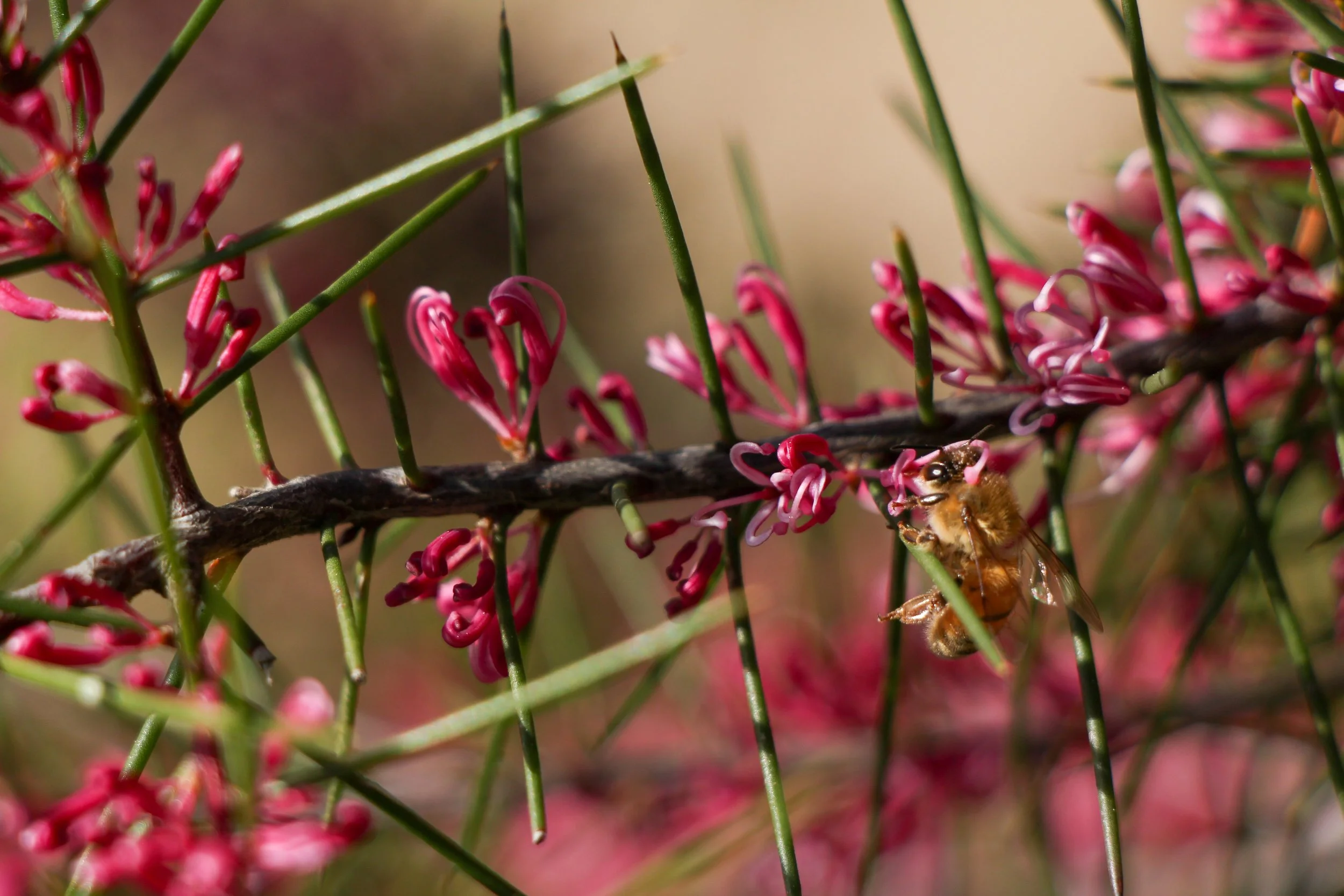Hakea Vs. Grevilleas - A Taxonomic Tangle
Hakea sericea
What is in a name? Actually, a lot, when it comes to plants. Scientific names are used to differentiate between not only species but help us map out their evolutionary lineage, they give us hints to the characteristics of the plant, and maybe even acknowledge the person discovered the species or bred the cultivar. Historically plants were categorised and named by their appearance but that’s now changing. DNA mapping is changing the face of botanical/ scientific naming protocols and are stirring up the plant world.
One of the biggest taxonomic shake-ups in recent years involves two iconic Australian plant groups: Grevillea and Hakea. While these genera have been treated as separate for over two centuries, DNA research has revealed a surprising truth—Hakea isn’t its own distinct species at all. The DNA results are in and It is actually a subspecies within Grevillea, making it a subgroup rather than a separate genus. Both Grevillea and Hakea are so closely related that in terms of the DNA they should both have the same name.
Grevillea acanthifolia
A Problem of Names
For years, the two were easy to tell apart. Hakea species produce thick, woody seed pods that remain on the plant until fire triggers them to open, while Grevillea species have thinner, leathery seed pods that naturally release seeds without fire. This distinction worked for a long time—until modern genetics exposed their deeper, close evolutionary connections.
With this revelation, taxonomists faced a challenge: How to classify these plants in a way that aligns with evolutionary history. Two main options emerged:
Merge Hakea into Grevillea, making everything one big genus.
Due to taxonomic rules, all Grevilleas would be known by Hakea as it was discovered and named 12 years earlier then GrevilleaKeep Grevillea the species, and divide up all Grevilleas into smaller distinct genera, of which hakea will be one. (others will include Finschia)
Hakea dactyloides
Hakea sericea
Grevillea acanthifolia
A Controversial Move
Australian scientists were carefully working toward a solution when, in 2018, a group of European botanists took matters into their own hands. Without consulting their Australian colleagues, they published a new classification that lumped Grevillea and Hakea together, renaming hundreds of species under Hakea. technically this is the correct taxonomic solution but, think of the extre re-naming/ re-labeling work!!!
Understandably, this caused a stir. Australian herbaria and plant databases have not recognised the changes, leaving the taxonomy in limbo.
A Lesson from History
Interestingly, this isn’t the first time Grevillea has been at the center of a naming controversy. In the early 1800s, botanist Richard Salisbury was accused of plagiarising plant names from his colleague Robert Brown, publishing them first to claim priority. His actions led to professional exile, and his names were widely ignored—a fate that may await this latest attempt at renaming Grevillea.
What’s Next?
For now, the debate continues. It’s likely that Grevillea will eventually be reorganised to keep Hakea intact, but the specifics are still being worked out. So, plant enthusiasts, take note—some familiar names may be changing soon!
If you’d like to hear more about grevilleas check out my lates podcast with David Binch.






